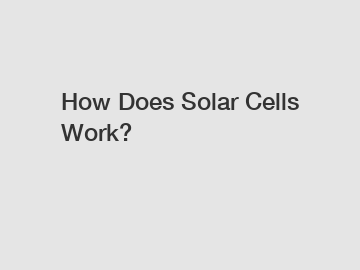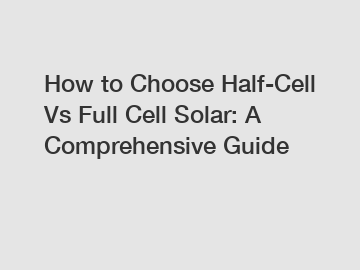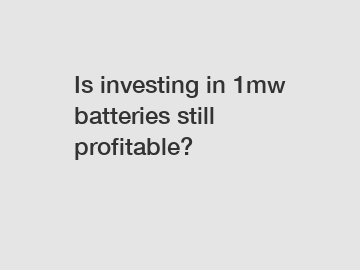How does a TOPCon solar cell work?
TOPCon technology: New solar cells for greater efficiency.
Functionality
Click here to get more.
The term TOPCon stands for Tunnel Oxide Passivated Contact and describes the specific structure of a solar cell. The novel cell architecture was presented by researchers at the Fraunhofer Institute for Solar Energy Systems in Freiburg in , but it still took a few years until the first TOPCon modules came onto the market.
The basic idea of ''the TOPCon concept is that the metal of the connection contacts does not come into contact with the silicon layer. This prevents charge carrier recombination, which typically causes performance losses at the rear of the cell.
To prevent recombination, a very thin layer of silicon oxide (just a few nanometers) is applied to the surface of the solar cell. This SiO' layer passivates the surface, i.e. it blocks the passage of a type of charge carrier. However, the layer is so thin that the current can 'tunnel through' quantum mechanically. In addition to this 'tunnel layer', another layer of highly doped silicon is inserted, which improves electrical conductivity and reduces transmission losses.
TOPCon Cell Technology: Things to Know About the Next ...
Technological advancements in solar cell technology have played a pivotal role in improving the efficiency and cost-effectiveness of solar energy. With the PERC cell having reached its limits, one such innovation that has gained significant attention in recent years is TOPCon (Tunnel Oxide Passivated Contact) cell technology.
In this blog post, we will explore what TOPCon cell technology is, its advantages over PERC cells, and its current and projected market share.
Benefits of TOPCon Technology
Some notable benefits of this new cell technology include:
Adaptability to the existing manufacturing process
One of the key benefits of TOPCon cells lies in their seamless integration with the current manufacturing infrastructure. As TOPCon cells can be produced using similar equipment as PERC cells, the transition to this new technology from existing PERC production lines is smooth and cost-effective. A slight increase in cost allows for easy upgrading to TOPCon solar cells, making it a viable and efficient option for manufacturers.
Higher efficiency
TOPCon cells reach an efficiency of around 28%, which is significantly higher than the efficiency of PERC cells, which is typically around 22%.
RenewSys N-type TOPCon modulesEnhanced low-light performance
TOPCon cells exhibit higher efficiency in low-light conditions, enabling them to generate electricity even when sunlight is limited.
Better performance in a hot climate
TOPCon panels have a lower temperature coefficient, usually < (-)0.30 %/°C. This results in less power reduction with every degree rise in temperature, allowing TOPCon panels to outperform mono PERC panels in hot climates by generating more power.
Increased energy generation
When compared to PERC modules, TOPCon modules demonstrate significantly lower power degradation both within the first year and over their extended 25 to 30-year lifespan. As a result, TOPCon panels consistently produce more energy throughout their operational lifetime.
Improved bifaciality
TOPCon cells have a higher bifaciality than PERC cells, generally 80-85%, which means they can generate more electricity from the rear side of the cell. This is important for solar panels that are installed in bifacial configurations.
For more information, please visit 潞安.
See also:Chart: Lithium-ion battery prices are falling again
The 8 Best Solar Panels for Camping of 2024 | Tested
Portable Foldable Solar Panel Kit Polycrystalline 120W Suit ...
How do I choose a packaging machine with optimal five power features?
How Can Personalized Solar Panels Revolutionize Energy?
Which mono 36 product is most popular?
Is it a good idea to build my own battery packs
What is TOPCon Solar Cell Technology?
TOPCon cells are a type of n-type solar cell. N-type cells are made with a semiconductor material that has been doped with phosphorus, which gives the material a negative charge. This type of cell has several advantages over p-type cells, including higher efficiency and better performance in low-light conditions.
TOPCon cell technology is a further development of PERC technology. In PERC cells, the rear surface of the solar cell is passivated with a thin layer of aluminium oxide (Al2O3). This layer helps to reduce recombination losses, which can improve the efficiency of the cell.
In TOPCon cells, a thin layer of silicon dioxide (SiO2) is deposited on top of the Al2O3 layer. This layer creates a tunnelling junction, which allows electrons to flow more easily from the p-type emitter to the n-type substrate. This tunnelling junction helps improve the efficiency of the cell by reducing the series resistance.
TOPCon cells are generally n-type. N-type cells are made with a semiconductor material that has been doped with phosphorus, which gives the material a negative charge. This type of cell has several advantages over p-type cells, including higher efficiency and better performance in low-light conditions.
Current and Estimated Market S
hare
Currently, TOPCon cells hold a relatively small market share, but it is growing rapidly. In , TOPCon cells accounted for about 10% of the global solar cell market. However, TOPCon is expected to become the dominant cell concept after and is estimated to reach a market share of around 60% by , according to the International Technology Roadmap for Photovoltaic (ITRPV), April edition.
Data credits:
RenewSys R&D
International Technology Roadmap for Photovoltaic (ITRPV), April edition
Image credits:
RenewSys
For more information, please visit topcon solar cell.
4 Tips for Selecting Containerised Battery Storage Systems
The Benefits of Using 120 Cell 275W Solar Panel: A Comprehensive Guide
How to Choose 455 Watt Solar Panels: A Complete Guide
Four Companies Leading the Rise of Lithium & Battery ...
BESS: Energy Saving Solutions for Efficient ...
10 Questions You Should Know about Shapes of Solar Panels
How do I choose the best 320w Solar Panels for my needs?









